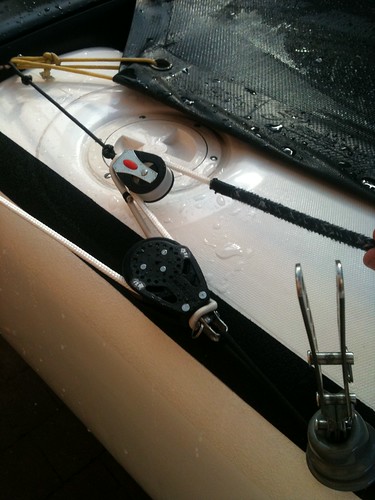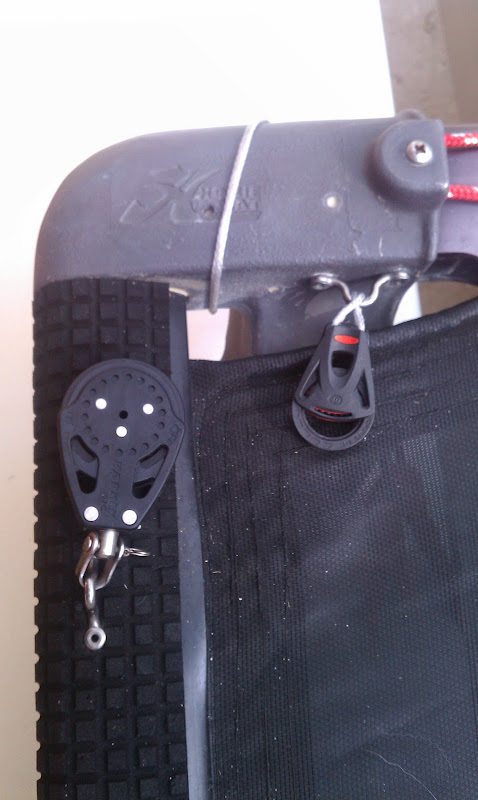I installed the Spinnaker Kit from Hobie Cat last week and tested it out. I encountered two problems. First, the instructions did not give good guidance as to where on the pole the snuffer ring should be mounted. I installed mine as per the photo below. However, when trying to reel in the sail, it gets hung up on the bridle. I am thinking I need to move the ring farther out towards the end of the pole, but how far? Any thoughts?

The second issue concerns the blocks that control the sheet which is attached to the tack of the sail. The kit included two Harken Carbo Ratchet blocks, they are installed as per the photo below (one on each side of the tramp). The sheet is a loop that is controlled from the back of the boat much like the jib sheet. This block system does not hold the sheet in place without some tension on my end of the sheet. Without that tension, the line just slips through the block. So, when the spin is deployed, I'm forced to hold the spin sheet or it will release and allow the sail to flutter. I want to replace these blocks with one Harken Swivel Cam on each side rail, so they'll lock the sheet in place when the sail is set. I posted a pic below of the present set up. What have I done wrong? The instructions were completely useless in describing how the blocks should be situated. There is nothing at the business end of the sheet (back where the captain sits) to keep tension loaded on the line.

--
Karl, Captain of Stayin' Thirsty
2011 Hobie 16SE
Atlanta, GA
--






